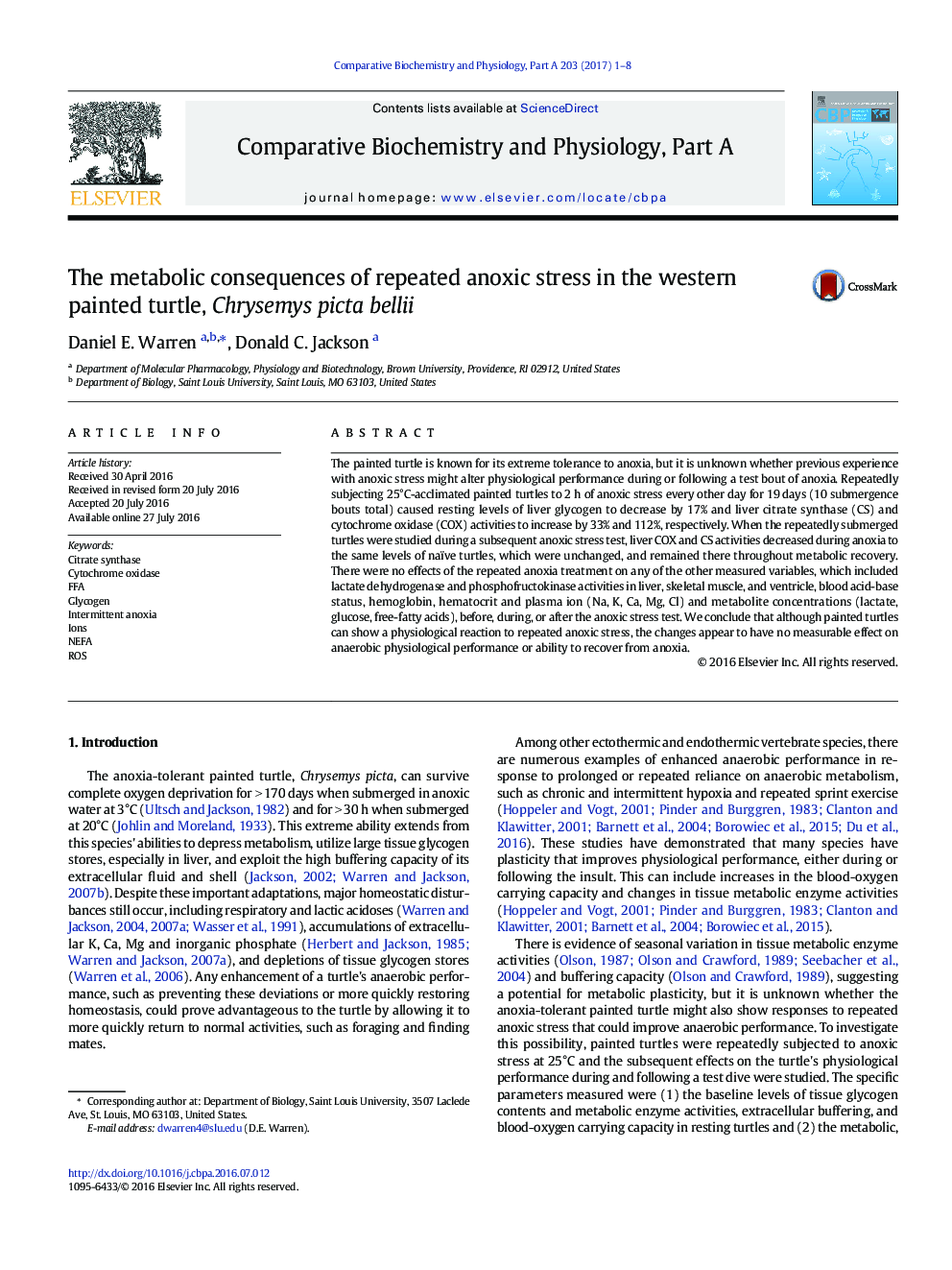| Article ID | Journal | Published Year | Pages | File Type |
|---|---|---|---|---|
| 1971786 | Comparative Biochemistry and Physiology Part A: Molecular & Integrative Physiology | 2017 | 8 Pages |
The painted turtle is known for its extreme tolerance to anoxia, but it is unknown whether previous experience with anoxic stress might alter physiological performance during or following a test bout of anoxia. Repeatedly subjecting 25°C-acclimated painted turtles to 2 h of anoxic stress every other day for 19 days (10 submergence bouts total) caused resting levels of liver glycogen to decrease by 17% and liver citrate synthase (CS) and cytochrome oxidase (COX) activities to increase by 33% and 112%, respectively. When the repeatedly submerged turtles were studied during a subsequent anoxic stress test, liver COX and CS activities decreased during anoxia to the same levels of naïve turtles, which were unchanged, and remained there throughout metabolic recovery. There were no effects of the repeated anoxia treatment on any of the other measured variables, which included lactate dehydrogenase and phosphofructokinase activities in liver, skeletal muscle, and ventricle, blood acid-base status, hemoglobin, hematocrit and plasma ion (Na, K, Ca, Mg, Cl) and metabolite concentrations (lactate, glucose, free-fatty acids), before, during, or after the anoxic stress test. We conclude that although painted turtles can show a physiological reaction to repeated anoxic stress, the changes appear to have no measurable effect on anaerobic physiological performance or ability to recover from anoxia.
